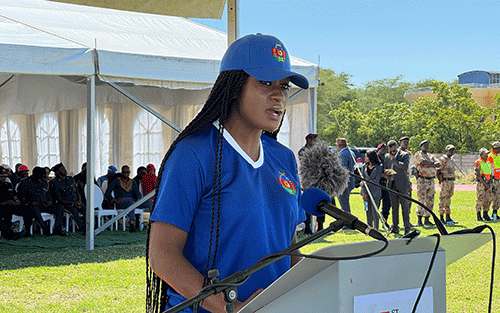OSHAKATI – Nearly 100 people have died from malaria in less than 10 days as Namibia faces one of its deadliest outbreaks in recent years.
The sharp surge in deaths has alarmed both government and health officials, with President Netumbo Nandi-Ndaitwah describing the situation as disturbing, and calling for urgent preventive measures.
The Ministry of Health and Social Services stated that a total of 95 malaria-related deaths were recorded by 20 April 2025, while 5,226 severe cases required hospital admission.
In total, 56 130 malaria cases have been reported so far this year, a significant increase from previous years.
Last year’s statistics show that Namibia recorded approximately 39 500 malaria cases and 58 deaths, making the current figures a stark increase and a call to immediate action.
Addressing the nation during the Workers’ Day celebration at Oshakati Independence Stadium, Nandi-Ndaitwah urged citizens to take proactive steps in this matter.
“Prevention should be considered to avoid malaria deaths. People should take care and avoid being bitten by mosquitoes,” she said.
Health minister Esperance Luvindao announced that the outbreaks have hit 10 malaria-endemic regions, including Ohangwena, Omusati, Oshana, Oshikoto, Otjozondjupa, Omaheke, Kavango West, Kavango East, Kunene and Zambezi.
She said malaria cases have been increasing significantly in these areas, particularly during the rainy season.
“Malaria is seasonal, and its cases increase during the rainy season from December to May.These months raise the risk of outbreaks, especially in regions with conditions favourable for mosquito breeding,” she noted.
Luvindao further said local transmission remains the primary concern, with 45 649 cases accounting for 81% of the total acquired within Namibia’s borders.
Meanwhile, imported cases from outside the country stand at 10 466, or 19%. The health minister emphasised that regions such as Erongo, Hardap, Khomas and Karas remain malaria-free due to their dry and cool climates, which are unsuitable for mosquito breeding.
However, areas with standing water, uncovered containers and poor sanitation continue to be high-risk zones. “Stagnant water around households from open ponds to discarded containers creates ideal breeding conditions for mosquitoes,” she added.
“In light of the current outbreak, I urge all Namibians across all sectors to come together in a unified and determined national effort to combat this public health threat. Let us not be complacent.
I call upon every individual to take personal responsibility by engaging at least one or two others, be it a family member, colleague or neighbour to raise awareness about the critical importance of seeking prompt medical attention at the first sign of malaria symptoms,” advised Luvindao.
Malaria symptoms include fever, chills, headache, nausea and fatigue. The ministry urges anyone experiencing these signs to visit the nearest health facility without delay.
vkaapanda@nepc.com.na


